Introduction
The Pentar company kindly provided me with PENTAX AD 9×28 WP binoculars for review. These are compact binoculars with a unique 9×28 formula. The inverting system is made on the basis of prisms “with a roof” (roof). The manufacturer declares a multi-layer anti-reflection coating, a sealed nitrogen-filled construction, BAK4 prisms with a phase-correcting coating, a protective coating of the front lenses, a long eye relief, and a body made of light aluminum alloy.

Declared technical characteristics:
Type: binoculars with a central focusing mechanism and roof-prisms
Objective lens: 3 elements in 2 group
Eyepiece lens constructions: 5 elements in 4 groups
Magnification: 9x
Objective lens diameter: 28 mm
Linear field of view at 1000m: 98 m
Exit pupil: 3.1 mm
Eye relief: 18 mm
Diopter adjustment range: -/+ 4 D
Focusing distance:: from 3 m to infinity
Eyepiece Ring: Helicoid Type
Height: 44 mm
Width: 115 mm
Depth: 117 mm
Weight: 365 g
Waterproof and nitrogen-filled (JIS Class 6) to handle the most extreme weather conditions (submersible to 1m).
Prism coating: BaK4, phase coating
Lens coating: multilayer coating of all optical elements
Minimum focusing distance: 3 m
Angle of view actual: 5.6° (note: lettering on the case)
Twilight factor: 15.9
Interpupillary distance: 58 mm – 72 mm
Package and body
I got the binoculars without a box, covers and a belt, only with a case (demo copy).
The body of the binoculars is made of aluminum alloy with rubber “armor” on the outside. The country of manufacture (China) is indicated at the bottom of the binoculars.
The size of the binoculars at the maximum interpupillary distance is 117 x 110 x 44 mm.
The weight of the binoculars in a case without covers is 393 grams (binoculars 356.1 grams, case 36.9 grams). Cover in synthetic fabric and synthetic leather. Case size 134 x 124 x 58 mm. There are no belt holes.
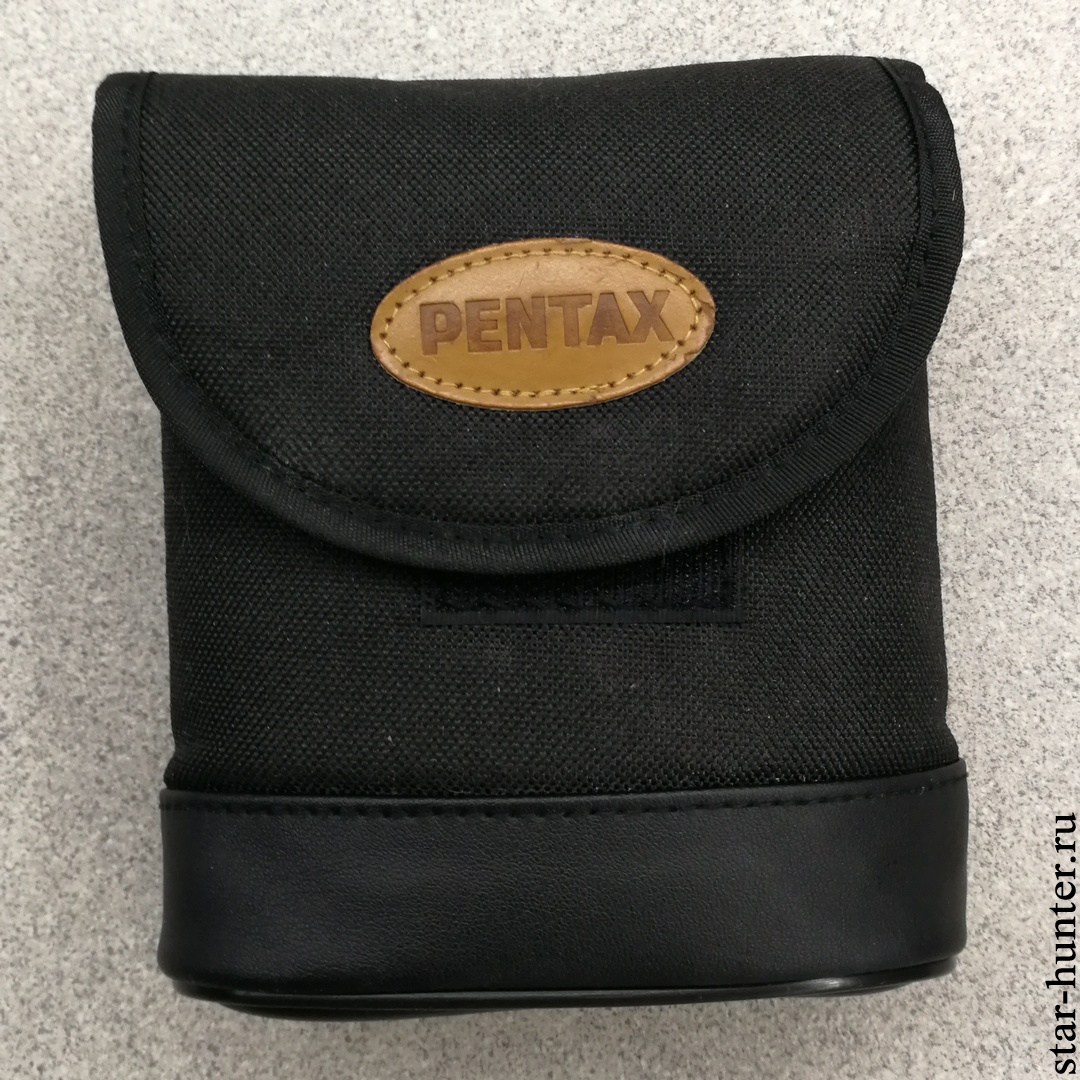
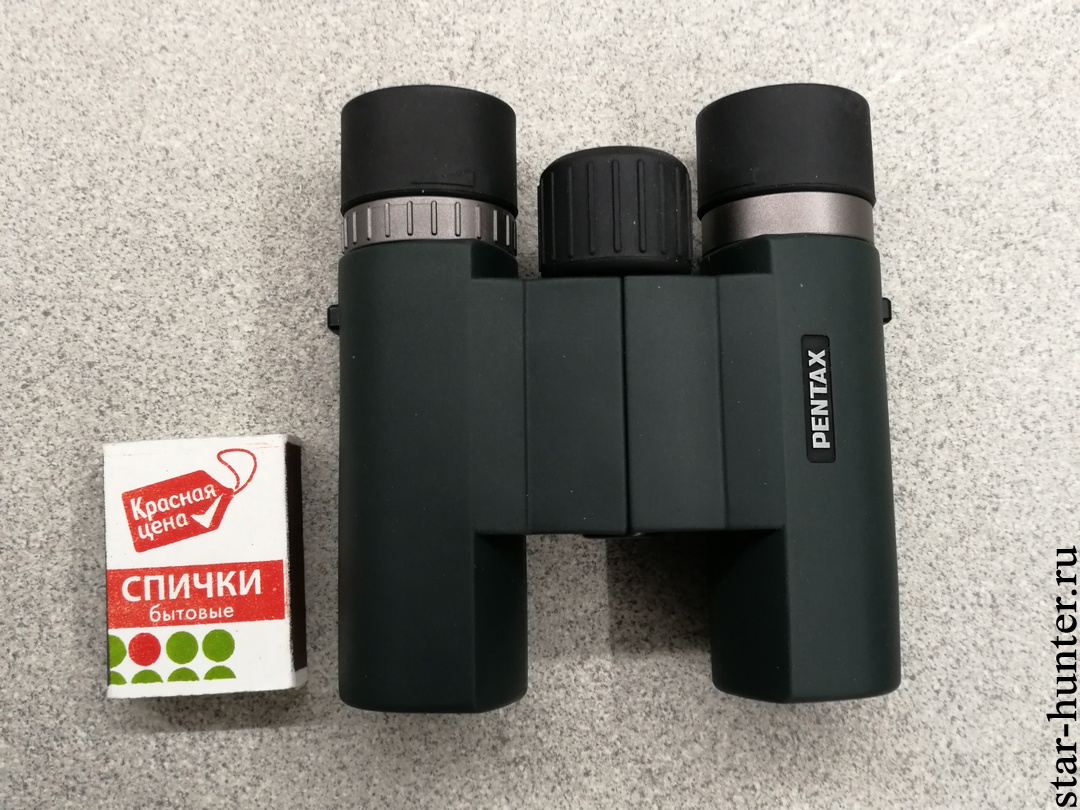
Due to the small size of the binoculars, I recommend a special grip for holding the binoculars – the fingers of one hand should cover the fingers of the other hand. Little fingers can be placed near the lenses. Thanks to the rubber coating with a rough structure, the binoculars are firmly held in the hands and do not slip out.
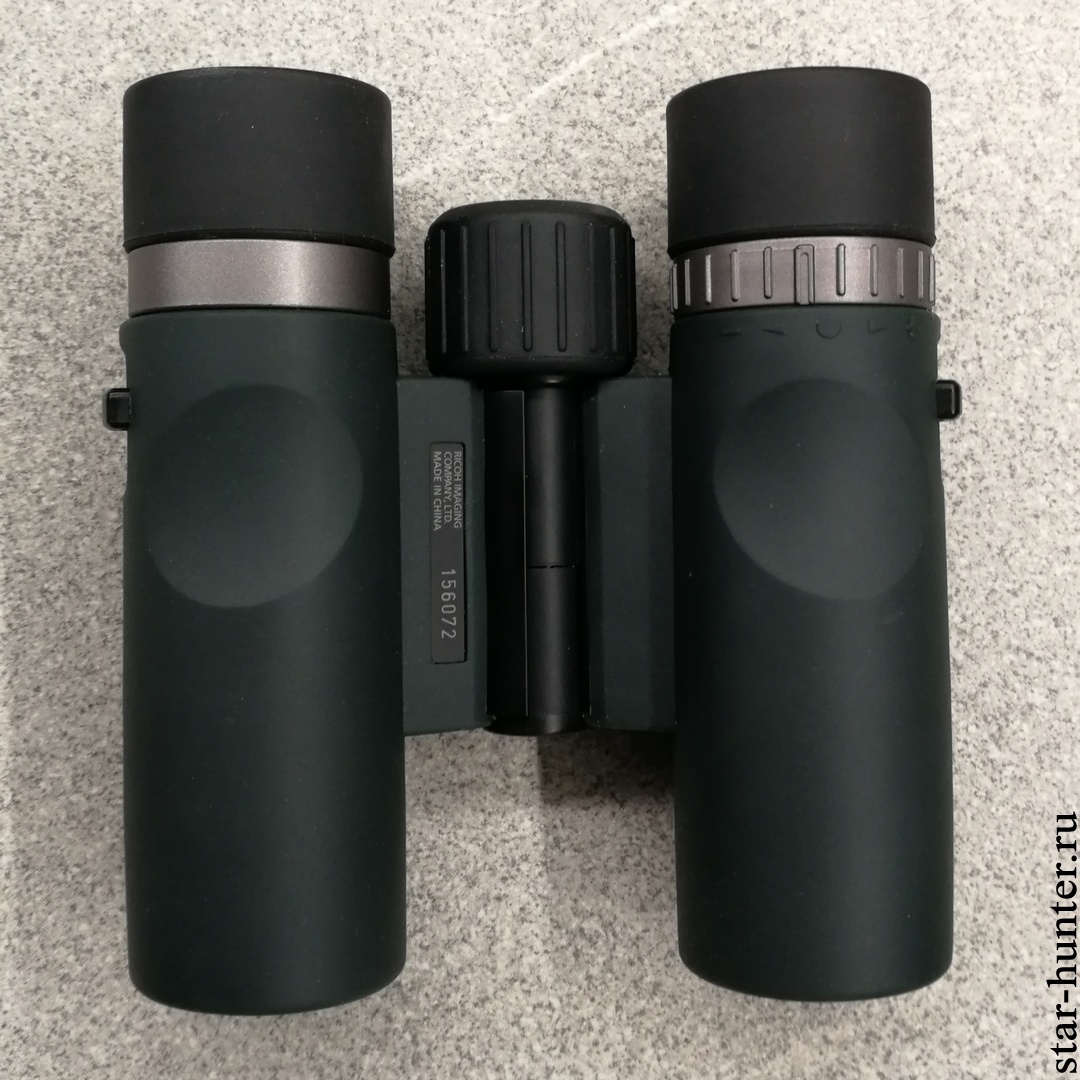
The binoculars are declared to be water resistant to immersion to a depth of 1 m (protection class JIS 6), nitrogen-filled housing (protection from fogging from the inside), as well as a hydrophobic lens coating. Before bringing the binoculars from the cold to a warm room, I recommend that you close the lenses / eyepieces with caps and hide them in your own case or a sealed bag / package. The binoculars should be protected from bumps, drops and mechanical damage – this applies to all binoculars in general.
The binoculars do not have a thread for a tripod.
Mechanics and focusing
The PENTAX AD 9×28 WP is a “classic” central focusing roof binocular. The measured range of interpupillary distance is 56.6 – 73.4mm, even more than stated (good). Interpupillary distance is adjustable smoothly and without sticking.
Focusing drum rubberized, with notches, diameter 30 mm. It rotates about 280 degrees (less than 1 turn), rotates tightly, with a quiet rustling. Finger grip is good, but due to the tightness of rotation, it is necessary to press a little on the drum so that there is no slippage. When focusing, one of the objective lenses inside the binoculars shifts, while nothing moves outside.
Diopter correction is carried out by rotating the plastic ribbed ring at the right eyepiece with quiet clicks, rather tight. The eyepiece thus rotates, completely shifting along the optical axis. I did not find any desynchronization of channels, backlashes, or the constant need for diopter correction of the right eyepiece.
The measured minimum focusing distance is 2 meters (smaller than stated).
The body of the eyecups is metal inside, rubber outside, diameter 35.3 mm. There are three positions (screwed in, middle position, screwed out) with fixation and click. The eyecup moves 7 mm.
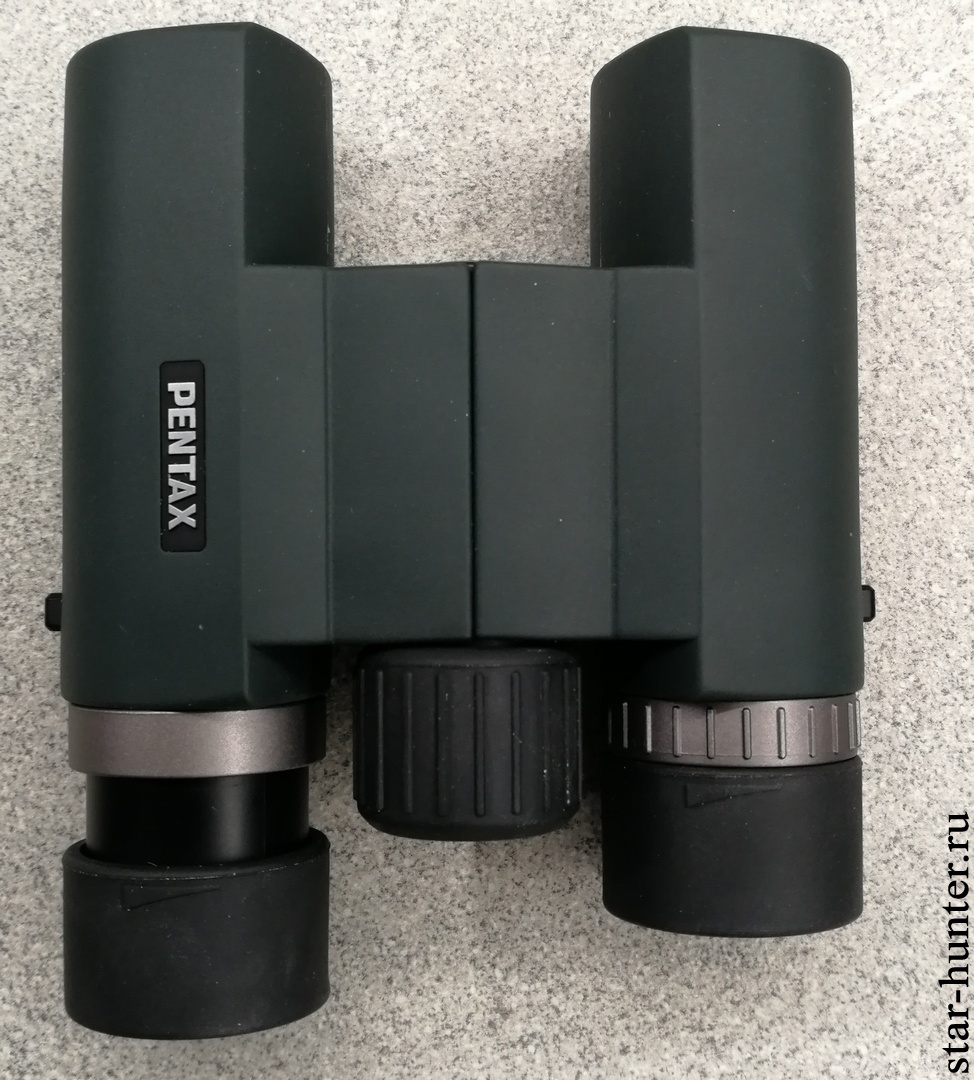
Optics
Three-lens lenses are located in front (gluing + negative component for focusing). Measured diameter 27.75 mm, recessed approximately 5.5 mm from the front of the binoculars. Coating on the outside of the lens is a dim blue-green, internal highlights are also green, but brighter light green.
Next is a block of prisms – a dim green coating.
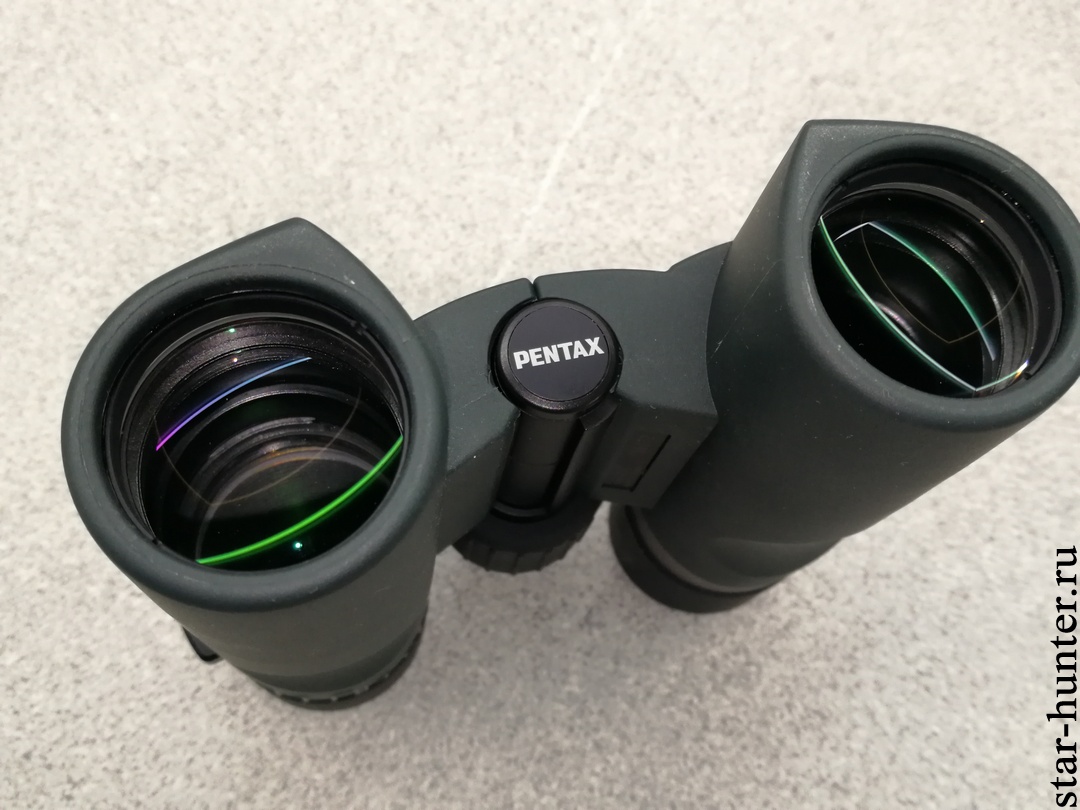

The eyepieces have the same coating as the lenses – a dim blue-green. All optical surfaces bordering air are coated.
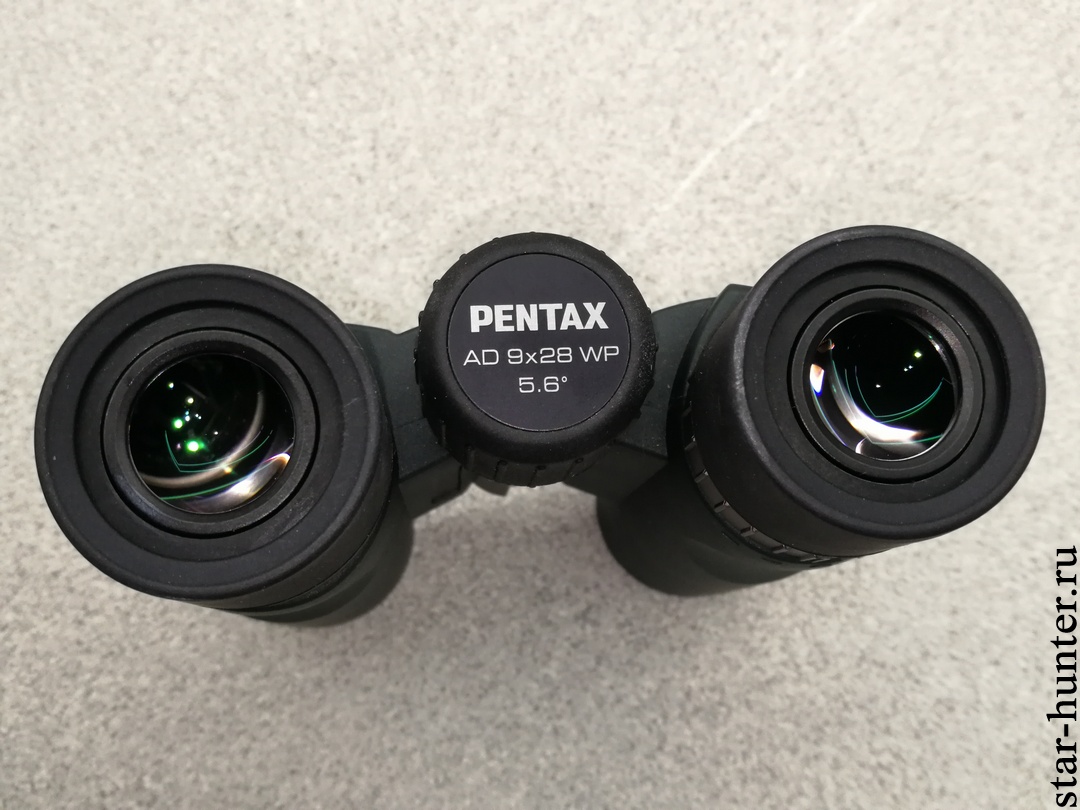
The exit pupil is a light circle at the exit from the eyepiece at a certain distance from the eye lens, in fact, this is an image of the lens (aperture). By projecting the exit pupil onto a sheet of paper or onto the photodetector matrix (in particular testing, the QHY5III178m camera), you can measure the size of the exit pupil. Testing with the QHY5III178m camera showed that the size of the exit pupil is 3.13 mm, which is almost the same as the declared one (3.1 mm). The blackening is not bad, but there are still spurious glare in the exit pupil when viewed near bright light sources.

To measure the magnification, two images of a ground object were taken – through binoculars and without binoculars. Then the size in pixels of some object in the field of view on each of the images is determined, one is divided by the other and we get the multiplicity. For PENTAX AD 9×28 WP, the magnification measured in this way was exactly 9x (± 0.3x). The magnification can also be calculated by dividing the working aperture by the exit pupil: 27.75:3.13=8.9x, which is within the error.
The eye lens are convex (almost flat), 16.9 mm in diameter, recessed by 2.5 mm relative to the folded eyecup. The measured field of view was 46.6 degrees. The measured pupil removal from the eye lens is 17 mm. The glasses show the entire field of view at 8x with a small margin.
Image
Daytime testing of the PENTAX AD 9×28 WP binoculars showed that about 50-60% of the field of view (from the center to the edge) is sharp, then there is a noticeable degradation in sharpness due to astigmatism with a slight curvature of the field. The sharpness on the axis is not bad, but it feels a little lacking in sharpness in the smallest details. Chromatism on the axis is imperceptible, there is a moderate lateral chromatism. There is a slight pincushion distortion. The edge of the aperture is slightly out of focus.

There is a faint warm tint in the image.
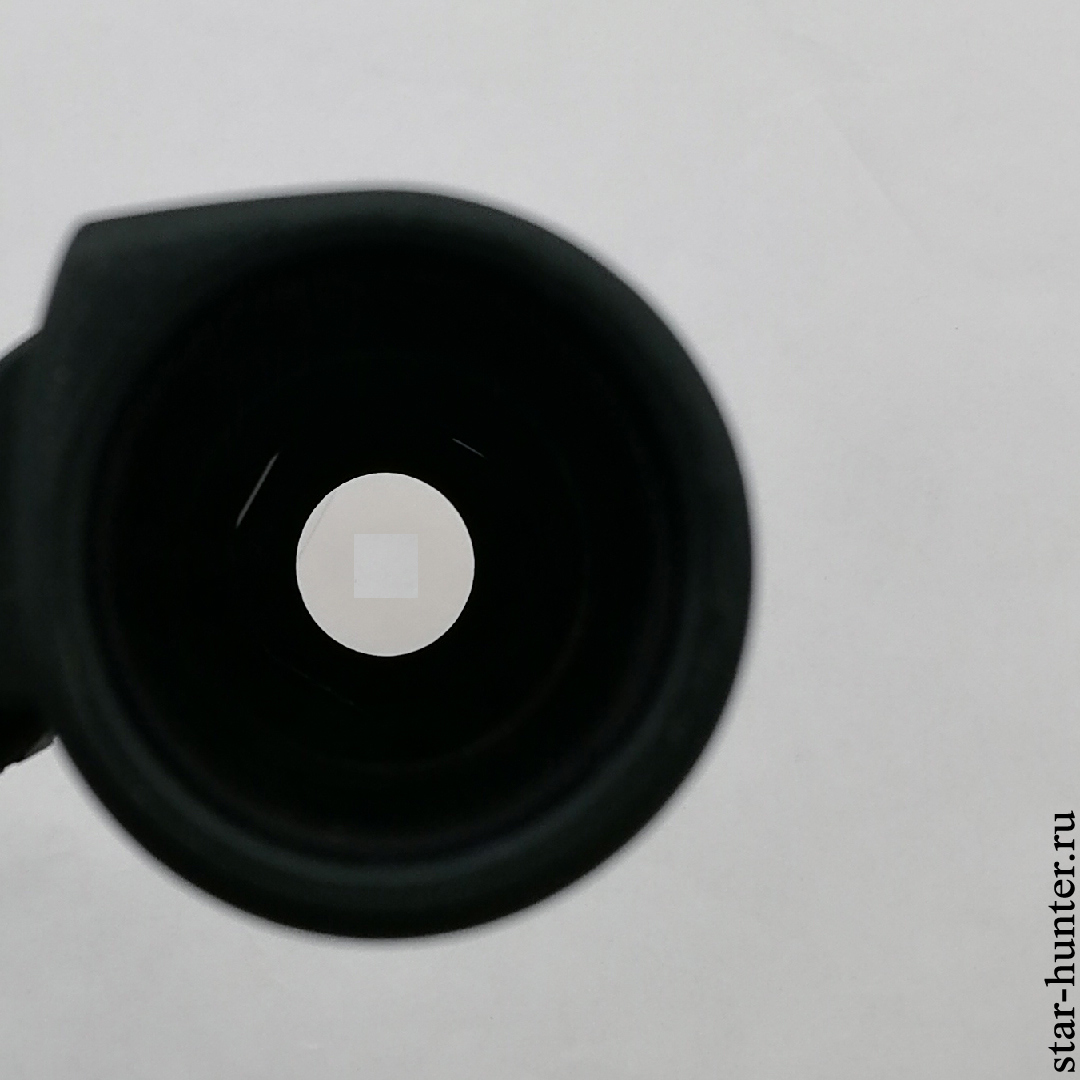
There is no doubling of the diaphragm when observing objects at infinity, both fields of view merge into one.
The collimation of the binoculars is excellent, the eyes do not get tired even during long-term observations.
When tested at night, the stars at the edge of the field of view look like arcs (parallel to the edge of the field of view).
In the evening and at night, the image is dark – in my opinion, PENTAX AD 9×28 WP is more suitable for daytime observations. Nevertheless, the bright objects of the Messier catalog (the Orion Nebula, the Andromeda Nebula, the Pleiades star cluster, etc.) can be clearly seen in it.
Summary
+ Light
+ Compact
+ Short focusing distance (from 2 meters)
+ Sharp image over most of the field of view.
+ Excellent collimation
+ Magnification as declared
+ Fully coated optics
+ Good color rendering
+ Large eye relief
– Reflection near bright light sources
– Taut focusing drum
– Lack of tripod thread.
In my opinion, the PENTAX AD 9×28 WP is suitable for travelers and backpackers who want small binoculars with brighter and larger images than comparable 8×25 models.